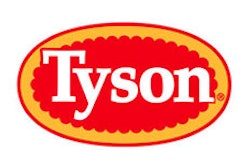Not too long ago, an article penned by members of A.T. Kearney’s Strategic Operations Practice outlined some of the major reasons why re-shoring, for all its business viability and value to the American economy, faces real problems with aging machinery and a workforce in need of new, well-trained people. Naturally, these two concerns stem from a variety of flaws in the educational and training systems currently in place throughout the U.S., and from a lack of foresight from manufacturers, who were not prepared for such a wide skills gap.
And perhaps more importantly, these concerns have become very real elements of the re-shoring equation, ones that manufacturers would be remiss to ignore while making the business case for bringing production back to the States from an off-shored location. Patrick Van den Bossche, the Americas Lead Partner at A.T. Kearney, says the difference between acknowledging these systemic flaws and working ahead to fix them, or ignoring them, could mean the difference between a successful and a failed change in doing business.
The aging element
When it comes to the current American manufacturing workforce, there are two truths most commonly accepted: that the people are getting older, and that the younger generations aren’t able or aren’t ready to pick up the slack. When it comes to the former, Van den Bossche says there’s no debating the real data — the median age of manufacturing workers has increased from 40.5 to 44.7 between 2000 and 2012. That’s a dramatic pick-up in such a short period of time, and reflects well the workforce reality.
Back in 2012, the Society of Manufacturing Engineers issued a bold report that stated there are 600,000 unfilled American jobs in the field of high-tech manufacturing. Amid a deep economic slump, the news spurred a great deal of debate within the entire industry. It meant that not only had a cultural shift pushed young Americans away from manufacturing, but also that the frameworks for teaching these kinds of skill — community colleges, technical schools and apprenticeship programs — have fallen by the wayside, for one reason or another.
Van den Bossche says the lack of training is a significant part of this issue. “We’ve all gone through a rough time, and that’s one of the areas where you typically start to look at when cutting costs. Probably, companies haven’t done as good of a job as they used to, in terms of training their people.”
But he is quick to say that companies can’t be held solely accountable for the lack of skilled workers out in the job marketplace, not can the schools or the teachers who help run them. He says, “Think about it — if you have a kid in school, with everything that happened in the last few years, with manufacturing moving overseas as fast as it did, would you feel comfortable to tell your kid to develop a career in manufacturing? I don’t think so.”
The truth is that manufacturing simply isn’t nearly as lucrative or attractive as it used to be. Van den Bossche claims that even if we started today in seriously rebuilding a manufacturing education curriculum, it would take at least a decade, if not longer, for returns to start showing. It’s not just that the students aren’t there — the teachers have left, too, either to retirement or to more lucrative industries.
The reason A.T. Kearney has worked to illustrate this situation, Van den Bossche suggests, is to prove that manufacturers need to incorporate these kinds of major cultural missteps in their business cases for re-shoring. The situation is more complex than many would like to believe, and re-shoring under a bad presumption would lead a company into a terrible future. With that in mind, Van den Bossche argues there are real solutions to the main problems of the re-shoring equation, at least when it comes to the labor force.
The fountain of youth — SOPs
According to Van den Bossche, there’s “only one path to follow” when it comes to dealing with a labor force that isn’t as skilled or educated as it used to be — standard operating procedures (SOP). He says, “Start documenting, including putting SOPs in place that describe exactly what these people are doing. If you look at the quality and the level of detail in these SOPs in most plants, they’re not sufficient. You couldn’t get somebody out of school and put them on a piece of equipment and have them do even a mediocre job.”
Van den Bossche says there are SOPs in place at almost all manufacturing companies, but they’re not nearly up to speed, and this problem can be amplified if operations were previously done overseas. He says the goal for any SOP is to allow a person straight out of school to quickly run with the necessary operations and do a sufficient job, but these guidelines are often fifteen years out of date and reference machinery that isn’t even in operation any more. There’s a real cost to keeping this documentation up-to-date, which manufacturers need to account for when thinking about re-shoring.
And it’s especially important as older generations of manufacturers — people who have been in the industry for decades and have a wealth of “tribal knowledge” — begin to retire with increasing speed. According to Van den Bossche, SOPs are a good start in helping trickle that knowledge down to new employees, but it probably won’t be enough. Apprenticeship models are one option, as is having new employees “shadow” others on the job.
Each have their benefits, but both come at a cost, which is the main factor in the re-shoring equation. He says, “With the things you can’t describe, you still have to find a way to transfer that. Again, that ultimately comes down to cost. … At this point, I think very few people are in a position to leisurely spend money on that kind of thing, but I think you will have to at some point, because the overall skill base that manufacturing has to work with will shrink until you start putting some effort in.”
Thinking twice
With all that in mind, the equation for re-shoring becomes a little more complicated, but Van den Bossche thinks that’s not necessarily a bad thing. There’s solid evidence that in the long-term, the outsourcing movement wasn’t perhaps fully thought-out — unforeseen costs, such as battling theft of intellectual property, began to eat at off-shored margins. No one wants to see the same situation play out with re-shoring, where in twenty years, all the manufacturing goes right back overseas. With that in mind, Van den Bossche characterizes the re-shoring movement as “unequivocally optimistic,” in that it’s not taking into account fully the costs of gaining and maintaining the necessary talent to make manufacturing here possible.
On that note, the value of a “Made in America” label is overplayed in certain ways, according to Van den Bossche. Yes, it certainly does help for companies that make sensitive goods, such as baby food — they can claim that by being U.S.-based, they’re safer and better-regulated than ever. But as many manufacturers found with the “green” movement, there’s only so much that consumers are willing to spend on goods that match a certain ethical consumer code.
And on the general uncertainty of the re-shoring equation, Van den Bossche says recent evidence hasn’t supported the equation either way. He cites an Indian textile company that set up manufacturing operations in the U.S. Of all industries, textiles would be one of the last people would expect to see return to the U.S., and yet it’s happened. And with some “slam-dunk” products, the work hasn’t returned. He says, “That indicates to me that it’s not 100 percent clear what exactly the right business case is. All that tells me, as a business executive, is that I should be very cautious and think twice.”
He adds, “Our mission has been: Don’t discard coming over to the U.S., because there’s a lot of reasons why you would want to come back, but just be careful, and make sure that you have realistic assumptions and you factor all the pieces in when you do that analysis. Otherwise, you’re going to be seeing quite a surprise when you get to the nuts and bolts of it.”
The key, of course, is making sure one has all those pieces in place. There are more resources available today than ever before — such as a comprehensive “total cost of ownership” calculator from the Reshoring Institutive — but no matter the path to making a re-shoring business case, it’s in everyone’s best interest to ensure no stone has gone unturned.



















